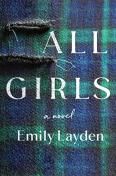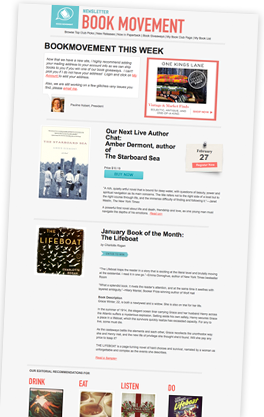BKMT READING GUIDES
All Girls: A Novel
by Emily Layden
Hardcover : 320 pages
0 club reading this now
0 members have read this book
Introduction
“All Girls is an exciting, innovative debut from a fresh and assured new voice. Emily Layden renders the fictional Atwater School in nuanced, honest, and rich depth, guiding its young characters with a tender and knowing hand. This is a sincere, poignant, and moving story of a group of teenage girls coming to terms with the world they've inherited.”––Taylor Jenkins Reid, New York Times bestselling author of Daisy Jones and the Six
A keenly perceptive coming of age novel for fans of Sally Rooney, Curtis Sittenfeld, and J. Courtney Sullivan, All Girls follows nine young women as they navigate their ambitions and fears at a prestigious New England prep school, all pitched against the backdrop of a scandal the administration wants silenced.
But as the months unfold, and the school's efforts to control the ensuing crisis fall short, these extraordinary girls are forced to discover their voices, and their power. A tender and unflinching portrait of modern adolescence told through the shifting perspectives of an unforgettable cast of female students, All Girls explores what it means to grow up in a place that promises you the world––when the world still isn't yours for the taking.
You grow to love a place... and then you grow up.
Editorial Review
No Editorial Review Currently AvailableDiscussion Questions
1. The opening of the novel reveals quite a bit about Atwater. What do these pages tell us about the school? How do they set the tone for the rest of the book?2. What did you think about the narrative structure of the novel? How did the novel’s shifting perspectives shape your understanding of the boarding school experience?
3. There are many important themes covered in the novel, such as: identity, mental health, sexual assault, and more. What did you think of the way the novel tackled these topics? What are some others that stood out to you as you were reading?
4. Discuss some of the defining moments for each of the young women in the novel. For instance: Celeste cutting her hair, or Sloane dancing on the sidewalk during the class field trip to New York City. What is the significance of each moment for each character?
5. While Macy struggles with an anxiety disorder, many of the characters struggle with non-clinical but very real feelings of anxiety. We know that we’re seeing higher rates of anxiety among young people than ever before. How did All Girls contribute to your understanding of this phenomenon? Does the novel offer any solutions for helping girls cope with these feelings?
6. On pg. 133, Chloe thinks, “It’s not just the vague corporate-speak and the noncommittal couching: it’s the slight condescension, too, of an adult who does not understand the lives of the people she’s serving.” Throughout the novel, did you feel that the adults serving the young women of Atwater understood them and their needs? What about society in general?
7. On pg. 197, Mrs. Doyle writes, “Atwater is a place where young women learn to use their voices." Yet the book seems to argue that the girls are often learning to use their voices in spite of Atwater’s best efforts. Which characters in the novel stand out to you for using their voices, and how do they come to find them?
8. On page 288, Bryce thinks, “It will be years before she can look back on this moment and realize that the Venn diagram Mia described had a third circle overlapping the other two: the portion of a culture that takes and takes and takes from girls, all the while refusing to recognize them as whole people.” What does she mean by this? How does our society “take and take” from girls?
9. Throughout the novel, we see the girls struggling to make sense of sex (pleasure, agency, consent). How do you feel the cultural dialogue about sex is failing young women? Does the book offer any suggestions for improvement?
10. On page 290, Bryce thinks: “This is what it is to love a place. You have to want it to be better.” How do you position this hopeful sentiment within the novel’s broader critique of institutions, and their failure to protect young women?
11. Reflect upon the final sentence of the novel. What feelings do the end of the novel stir in you as a reader? Has there been anywhere in your life, or any experience, that has had a similar effect on you?
Book Club Recommendations
Recommended to book clubs by 0 of 0 members.
Book Club HQ to over 90,000+ book clubs and ready to welcome yours.
Get free weekly updates on top club picks, book giveaways, author events and more








